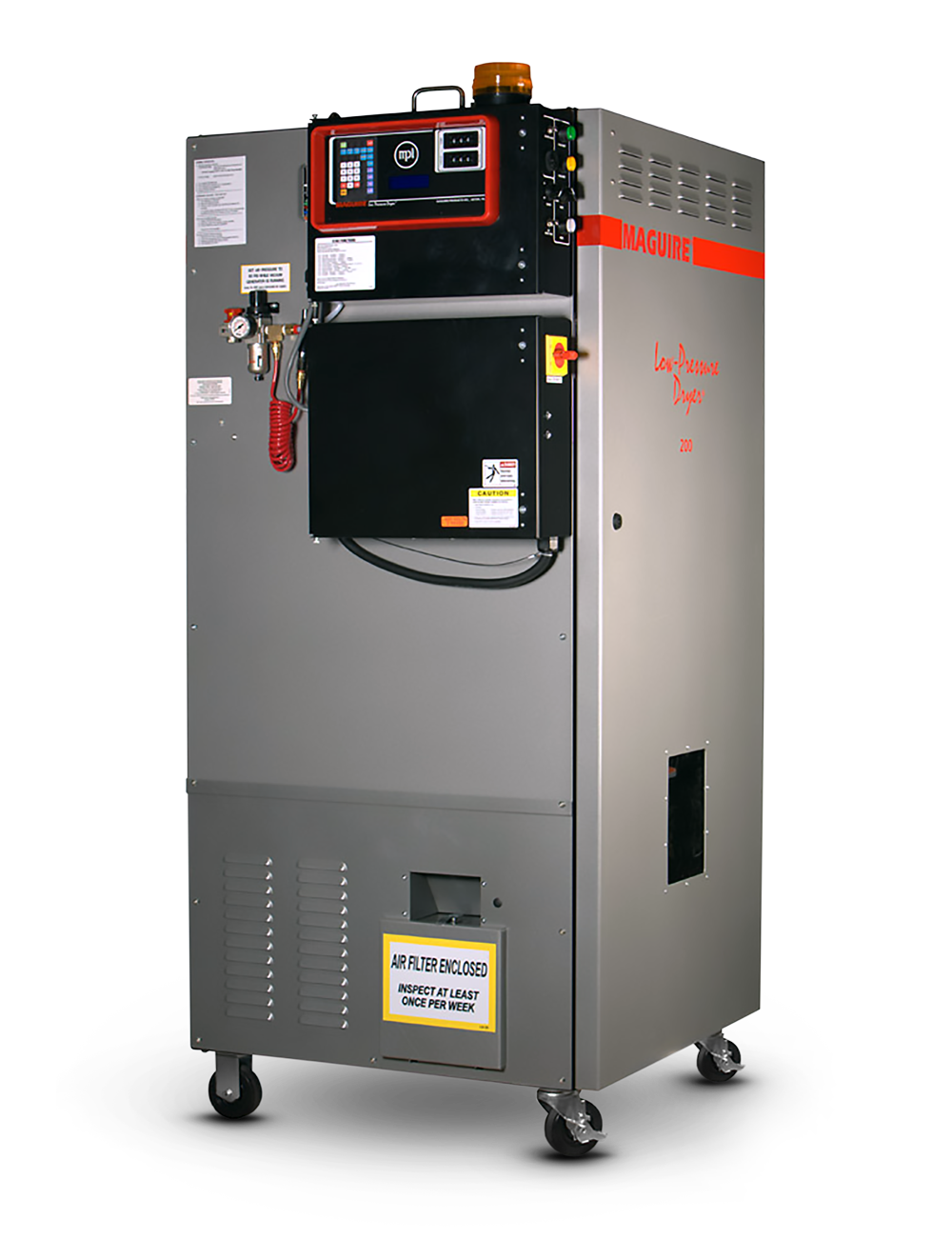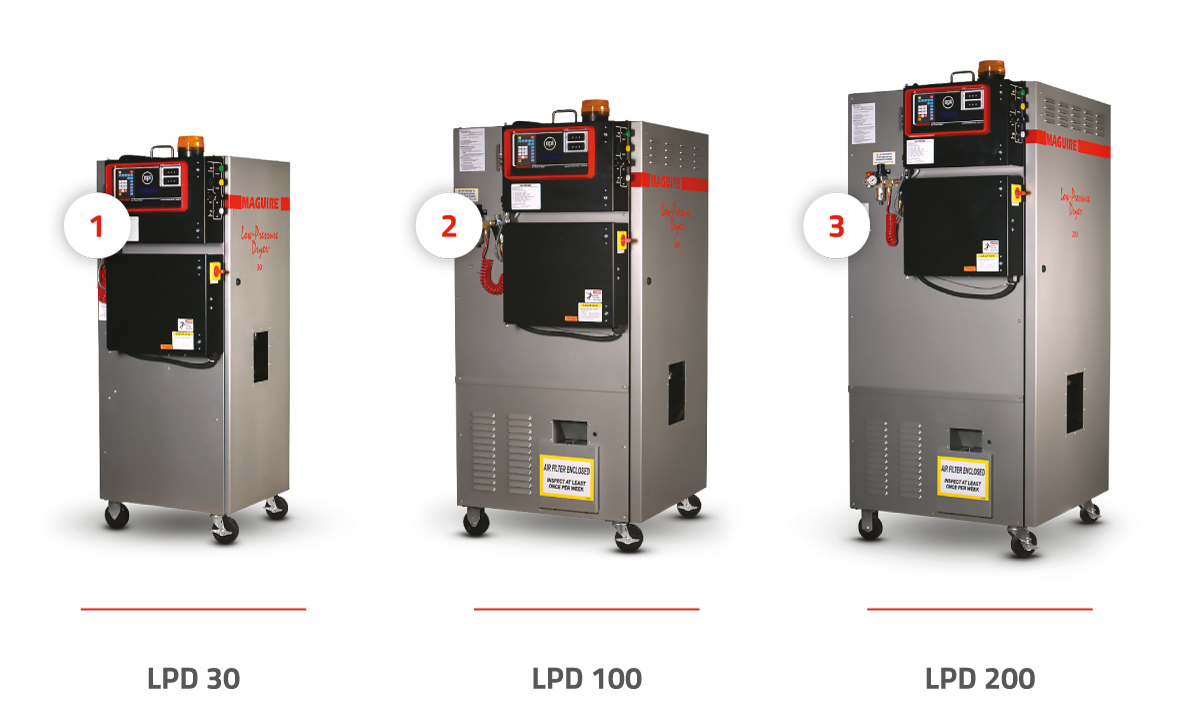Energy Efficiency
- Energy to HEAT material from ambient temperature to target drying temperature is the same for all drying processes.
- Energy to DRY material is where the differences occur when comparing a Maguire LPD dryer to all types of Desiccant dryers.
- Side-by-side testing of the vacuum dryer and a desiccant dryer shows 70 - 80% reduced energy consumption.
Energy Saver Modes Built in as Standard
- Temperature Sense Control: Temperature is controlled efficiently with energy saver modes built in as standard.
- Heater and blower are automatically regulated to ensure that only the required amount of heat and air flow are used to bring material up to temperature.











